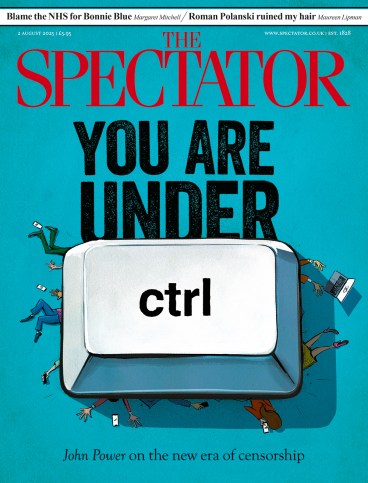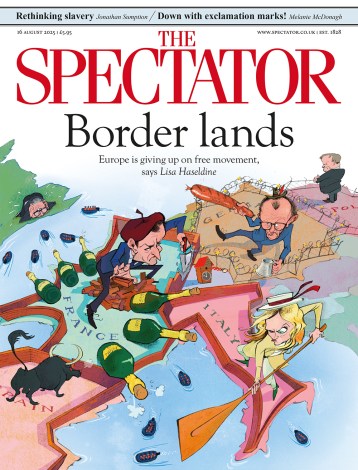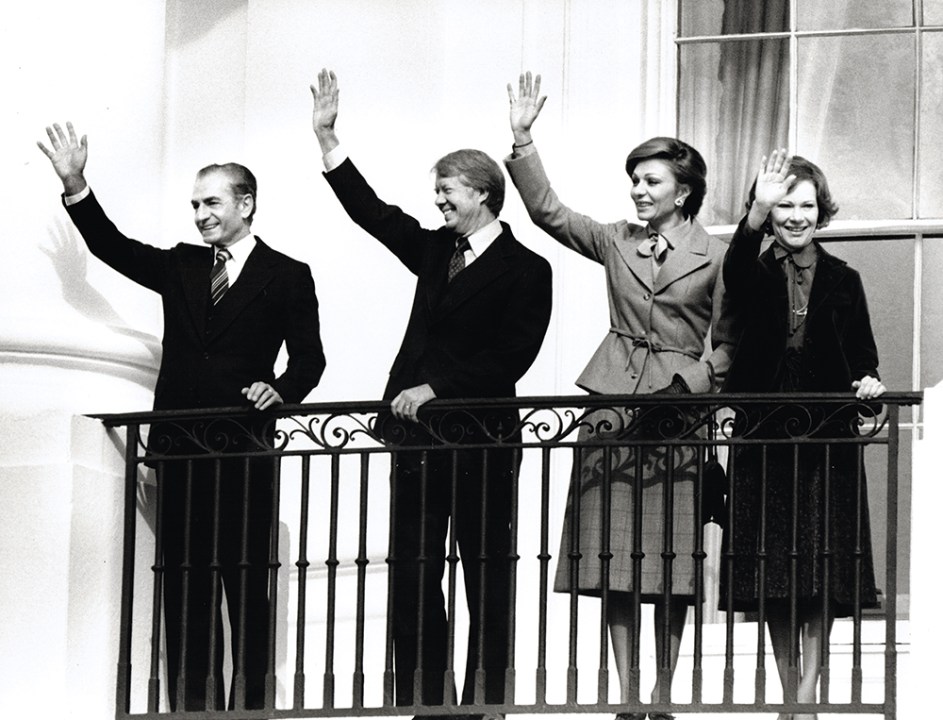
On 22 June this year, seven B2 Stealth bombers flew on a 37-hour round trip from bases in the US to drop 14 30,000lb bombs on two nuclear facilities in Iran. A third was attacked with cruise missiles fired from a submarine, possibly in the Persian Gulf. Few can say with any certainty how much damage was done to the Iranian nuclear programme, which Tehran insists is only for peaceful purposes, but it is likely to have been considerable. Whether this will slow or accelerate Iran’s effort to build a bomb is unclear.
This massive demonstration of American firepower brought the brief 12-day war between Iran and Israel to a rapid close. Iran came off considerably worse than its adversary in the conflict, though you would not know it from the rhetoric of Ali Khamenei, the Supreme Leader. One joke I heard in Israel in the days after the war’s end was that the Iranians were entirely justified in celebrating a tremendous victory over ‘the Zionist entity’, as they had shown the world how they could destroy more than a dozen of the biggest bombs ever built with nothing more than two multi-billion-dollar nuclear plants.
Scott Anderson’s fine, thorough and gripping account of the early stages of the Iranian revolution is a useful read for anyone who wants to learn quite how and why relations deteriorated to such an extent with what was once a staunch, if sometimes independent-minded, ally of the West.
Some accounts of the Iranian revolution – and there are many – do not bother overly with the deeper history of the country. This is not one, and Anderson covers much ground easily and elegantly. We learn of the rotten Qajar dynasty (1789-1925) and its failure to resist the depredations of imperial freebooters and powers, chiefly Britain. He then moves briskly on to Reza Shah Pahlavi, the uneducated, tough and efficacious cavalry officer who seized power in the 1920s and set about modernising the country in the usual style of military strongmen. Many of his expansive reforms, Anderson notes, caused great concern to Iran’s conservative clergy, including a young, gifted scholar called Ruhollah Khomeini.
Britain deposed Reza Shah during the second world war and installed his son, the slightly drippy Mohammad, on the throne. In 1953, the Americans – now the growing power in the region – schemed, along with the British, to save the young monarch from the populist prime minister Mohammad Mosaddegh, who wanted to nationalise the country’s oil industry in a coup that Iranians have never forgotten, as some sloganeering in Iran in June made clear.
Britain deposed Reza Shah in 1941 and installed his son, the slightly drippy Mohammad, on the throne
Anderson describes the growing megalomania and authoritarianism of ‘the Shah’, as he was soon known to the West, who conceived monstrously ambitious projects without the technical understanding or political skills to make them a success. Israel and the US assisted in setting up a frightening, though not always effective, security service. This helped protect Iran’s ruler from growing unrest led by ideologically diverse figures including the charismatic and increasingly vocal Khomeini, whom he exiled to Iraq in the early 1960s.
The Shah’s ‘White Revolution’ – a bid to transform Iran’s society and economy but not politics – led to massive change throughout that decade, turbocharged by vastly increased oil revenues in the early 1970s. But these fuelled inflation, a huge influx of rural poor into urban slums and fierce resentment of a corrupt, wealthy, westernised elite.
For much of this period (and Anderson largely misses this in his otherwise fairly comprehensive account), the extreme left were the vanguard of opposition in Iran. The Shah spoke of the ‘Red threat’ and the ‘Black threat’ – the left and the religious reactionaries – but feared the former most. The communist party, Tudeh, had been weakened by decades of repression; but groups spawned in the heyday of the new left’s revolutionary moment at the end of the 1960s waged a sometimes spectacular, if ineffectual, terrorist campaign against the Shah’s rule throughout the 1970s.
Some radical Iranian thinkers made a concerted effort to fuse Marxist-Leninist thought with Islamism. There was much that the two ideologies shared: binary thinking; an appeal to the downtrodden’s desire for social justice; visceral anti-Americanism; and enemies such as imperialism, capitalism and Zionism. Ali Shariati, a key thinker, translated from French to Farsi the most celebrated text of Frantz Fanon, one of the foremost intellectuals of the anti-colonial movement of the 1950s and 1960s. Shariati turned Fanon’s Les damnés de la terre into the mostazafin, ‘the exploited’ or ‘miserable’, a text which is still commonly used by the Iranian regime today.
The Shah’s security services crushed both leftist extremists and the Islamo-Marxists with relative ease. One reason was that support for these dissidents was largely restricted to the educated middle classes. When leftist militants tried to recruit in the miserable, conservative, overcrowded southern suburbs of Tehran where many rural immigrants now lived, they got nowhere. Repression, and the left’s failures, aided the radical clerics led by Khomeini in their efforts to first co-opt and then crush the diverse coalition that resisted the Shah through street protests in 1978 and 1979.
Wilful blindness, hubris and inconsistency characterised US policy in the years before 1979
Anderson does an excellent job of narrating the extraordinary events of the revolution itself, drawing deft pictures of the protagonists, including the Shah’s last hapless prime minister, the slightly absurd Francophile Shaphour Bakhtiar. He also interviewed the 86-ear-old former empress – who tried to the last to mitigate the consequences of her husband’s increasingly wayward decisions – at her modest home in exile in the US.
Anderson has dug deep into archives and published sources that cover the wilful blindness, inconsistency, hubris and ignorance that characterised US policy towards Iran in the years before 1979 and during the revolution itself. He has tracked down and interviewed many who were there, such as the mercurial and well-informed Michael Metrinko, a junior diplomat posted to Iran at the time, and other important players back in Washington. Anyone interested in the woeful roles of Henry Kissinger and Richard Nixon will find much here, and the missteps of Jimmy Carter are described both fairly and accurately. Some of this is familiar, but Anderson’s diligent research and reporting brings much that is fresh too. Inevitably, however, the emphasis on the US perspective and on US actors leaves less space for the multiple Iranian ones, which is a loss.
King of Kings winds up pretty much with the beginning of the hostage crisis of November 1979. This is a wise decision, and allows a satisfactory conclusion. Anderson does allow himself a rapid survey of the following years, which in fact saw a ‘second revolution’ as seismic as the first. Modern Iran is as much a product of the domestic conflict that succeeded the revolution and the bloody eight-year Iran-Iraq war as of earlier events. The period saw the radical clerics led by Khomeini cement their hold on power through the merciless destruction of all internal opposition, the building of a solid institutional structure for the new regime and the expansion of the Islamic Revolutionary Guard Corps. This eventually led to the succession in 1989 of a new Supreme Leader, a relatively young, middle-ranking scholar who was committed to the revolutionary project, called Ali Khamenei. He remains in power today.








Comments